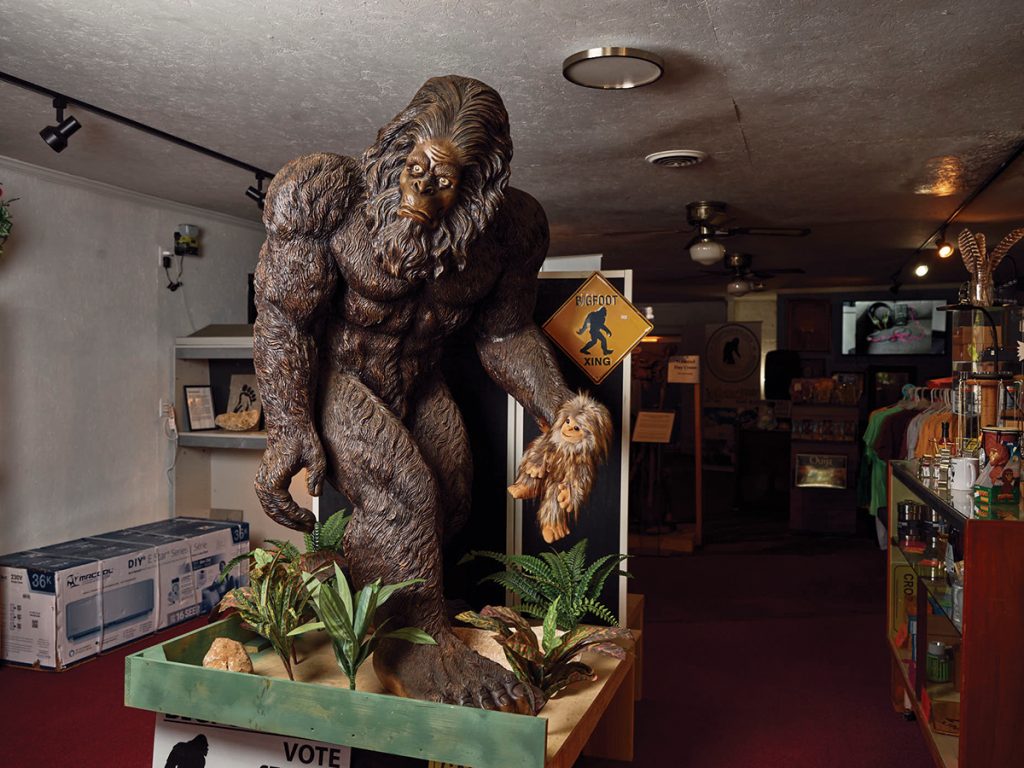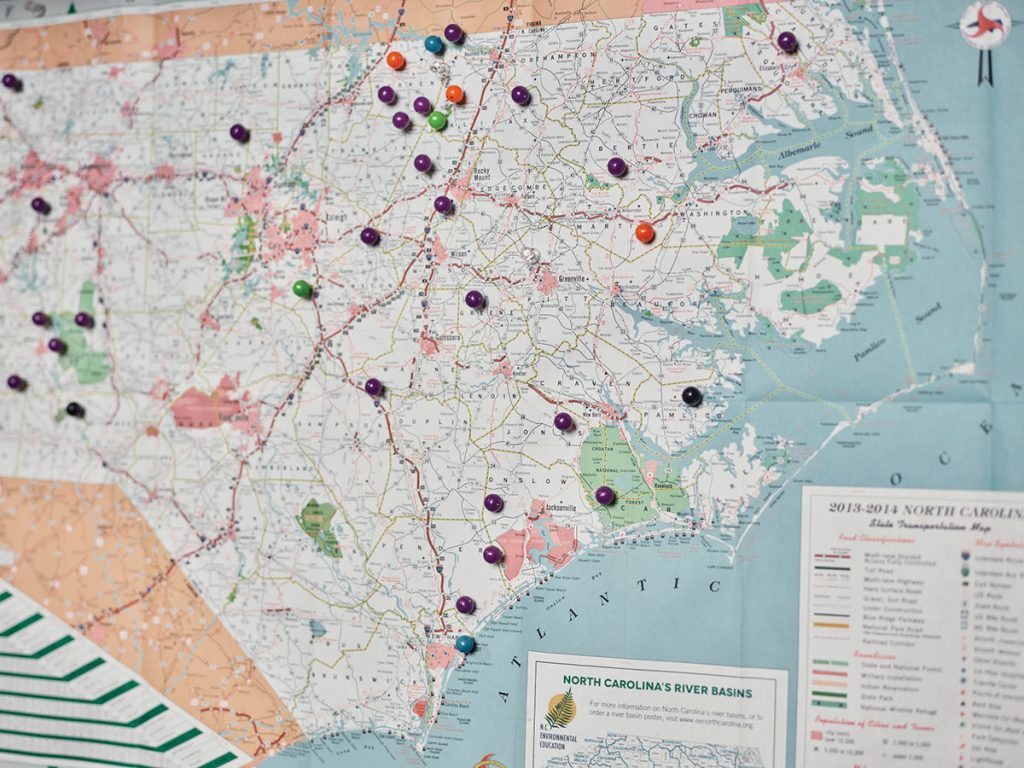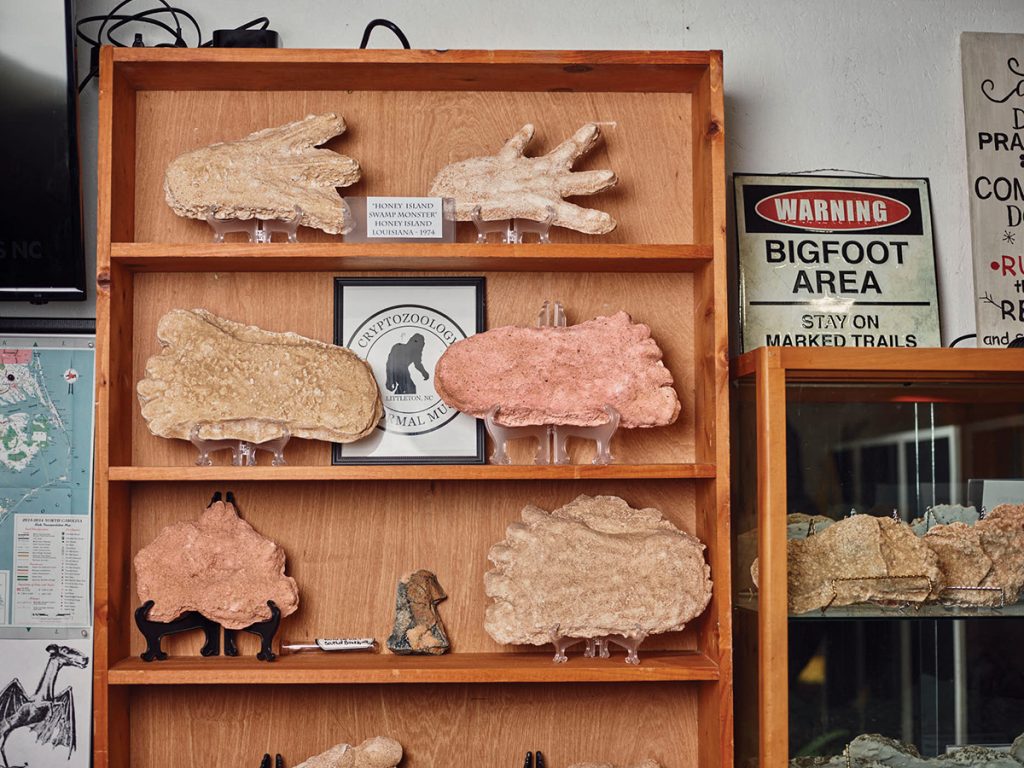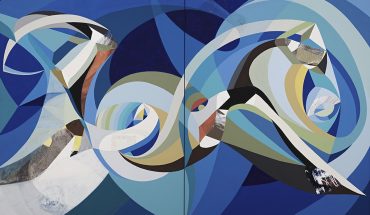An hour outside of Raleigh, the Cryptozoology Museum explores unproven stories, ghosts and other phenomena.
by Lori D.R. Wiggins | Photography by Joshua Steadman
Littleton is a tiny town in Halifax County, about 70 miles north of Raleigh. Population: 674. There, photographer Joshua Steadman discovered the Cryptozoology & Paranormal Museum, by accident.
“It was an interesting building; unassuming and odd,” says Steadman.
The cinder-block building was rectangular, with “stuff painted on the outside: A UFO. Bigfoot. And a Mars Attacks! sign, just like the movie poster,” Steadman remembers.
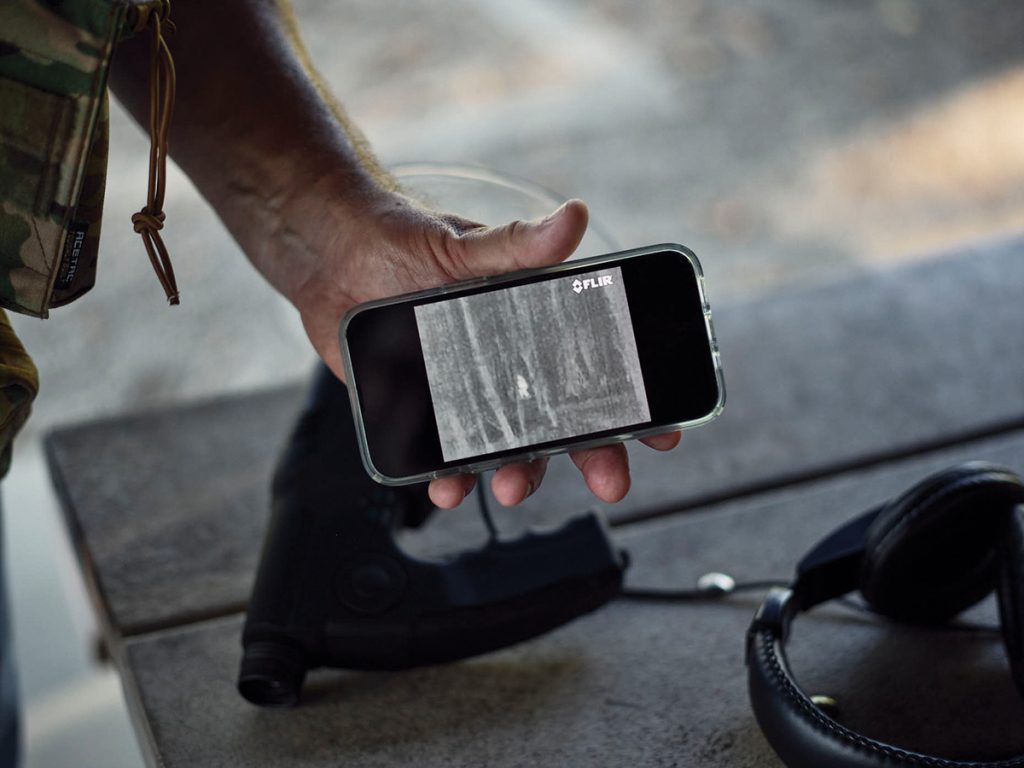
The carpet was dark. So was the lighting. “There’s a big Bigfoot, a life-sized statue when you walk in, and it was full of paraphernalia,” he recalls. Shelves displayed castings of footprints — mostly attributed to Bigfoot — with labels that noted the different areas they were discovered and to whom they likely belonged.
There was a map marking suspicious sightings nearby and a wooden coffin; there were dolls locked in cases to control any movement (one was Jerry Mahoney, the ventriloquist puppet) and shrunken heads.
At the time, Steadman was on assignment, so he didn’t have time to explore. But about a month later he went back to learn more, this time with his 14-year-old son in tow.
The museum is the brainchild of Stephen Barcelo, a former New York City photojournalist who left a changing news industry, retired and moved south in 2011. He’d planned to settle in to an easy life of family time, with a bucket list idea to travel Route 66.
Growing up on Long Island, New York, Barcelo loved historical tales of the paranormal surrounding lighthouses on the island.
He remembers the real-life murder in Amityville that inspired a series of horror films laden with paranormal phenomena, and he followed the conspiracy theories around the Montauk Project, which allege that the U.S. government conducted secret experiments on children in the 1970s and 1980s (stories that inspired part of the Netflix series Stranger Things).
But as Barcelo was renovating the historic home he shares with his wife and two daughters, he discovered that it had a history of suspected paranormal activity. Then, in 2016, a neighbor reported a sighting of a creature in the woods behind her house.
“It was very large and its hair was super long and it was running so fast,” Tifanie Merrill told CBS 17 at the time. “It wasn’t a bear and it wasn’t like a coyote. I’ve never seen anything like it whatsoever.”
Spooked, Merrill reportedly left Littleton for good — but it ignited curiosity for Barcelo. Since then, he’s been interviewing folks, recording them and taking photos. He even turned the front half of his home into a museum to showcase his findings.
(He also happens to be the town’s outgoing mayor: In 2017, he campaigned with a sign that read “Bigfoot sez: Vote Stephen Barcelo Commissioner Littleton, NC.”) Barcelo recently moved the museum out of his house and into a new 3,700-square-foot space, where it’s open weekdays from 1-5 p.m. and from 1-6 p.m. on weekends.
The building houses the museum, offices and a studio to record podcasts for YouTube. Barcelo has spent the last few months settling in, refurbishing and adding displays and working on a new UFO Section.
The museum delivers what its name proclaims: cryptozoology is the “search for and study of animals whose existence has not been proven” and animals considered extinct. Think dinosaurs and creatures that exist only in myths, legends or reported sightings. The museum features what he believes to be evidence of ghosts; lake and river “monsters”; and UFO stories.
Anyone who visits “will likely find something they like or something they’re interested in,” says Barcelo, who also leads ghost tours, paranormal and Bigfoot investigations and excursions to track cryptids. He and his team wear body cams looking for evidence of prints, hair and sightings for the museum’s documentary-style YouTube podcast. “Sometimes, we spend days camping out,” he says
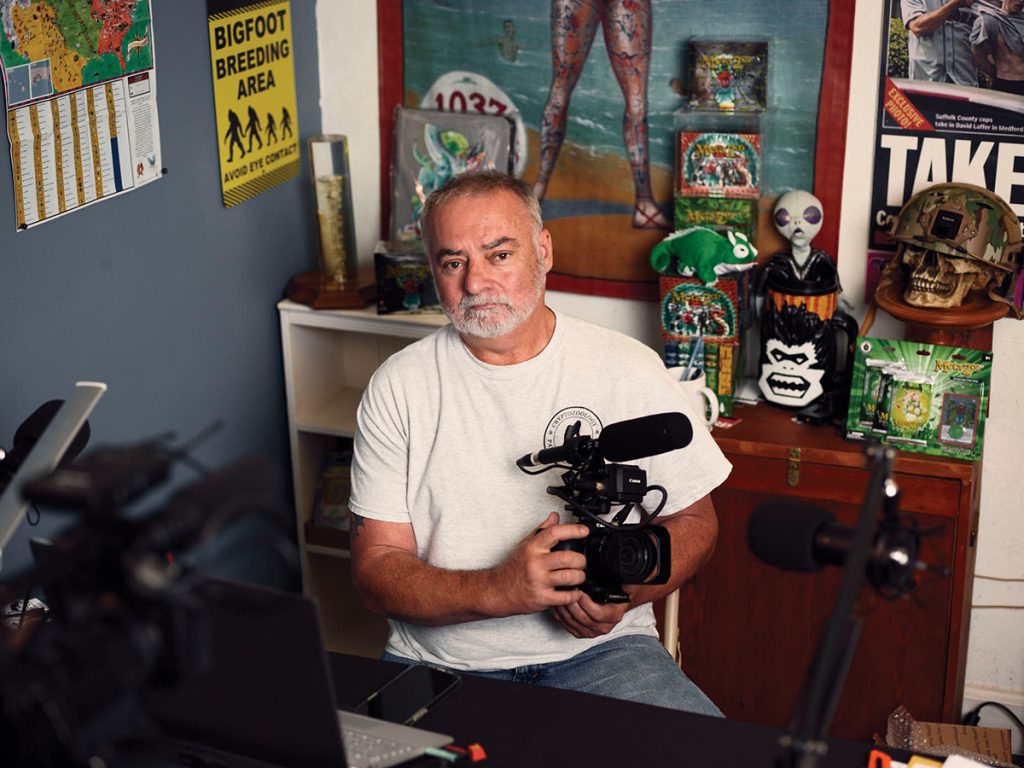
In April, following a two-year, pandemic-forced hiatus, more than 300 investigators, researchers and enthusiasts attended the museum’s annual Paranormal Bigfoot Festival at Littleton’s Lakeland Cultural Arts Center. They heard from keynote speakers and authors, explored vendors and tried activities centered on the paranormal and cryptozoology.
“We’re not trying to convince anybody that any one thing exists or that anything is real,” Barcelo says. “We want them to make that judgment all by themselves.”
So far, the most convincing Bigfoot sighting Barcelo says he has experienced was at Medoc Mountain State park, about 12 miles from the museum.
There, he says, a thermal image yielded multiple shots of a creature moving. “We could hear movement and we could see something moving,” Barcelo says, assuring it wasn’t a bear or deer.
“It was humanoid, upright, no clothes. I was taking pictures as fast as I could. I don’t think it knew I was there or, if it did, it didn’t seem to care.” Barcelo made his way downhill to issue a warning to other members of his crew: “We have company.”
They all shut off their head lamps and joined him up the hill. Once there, they heard a crash, but heard and saw no more before returning to their campsite, Barcelo says.
When Steadman and his son, Vaughn, came back for their visit, Barcelo gave them a taste of one of those research trips. “He immediately offered to take us on a hunt,” Steadman says, adding that Barcelo told them lots of stories as they hiked. “We listened and looked, but we didn’t find anything. Still, we had a good time with it!”
This article originally appeared in the October 2023 issue of WALTER magazine.

